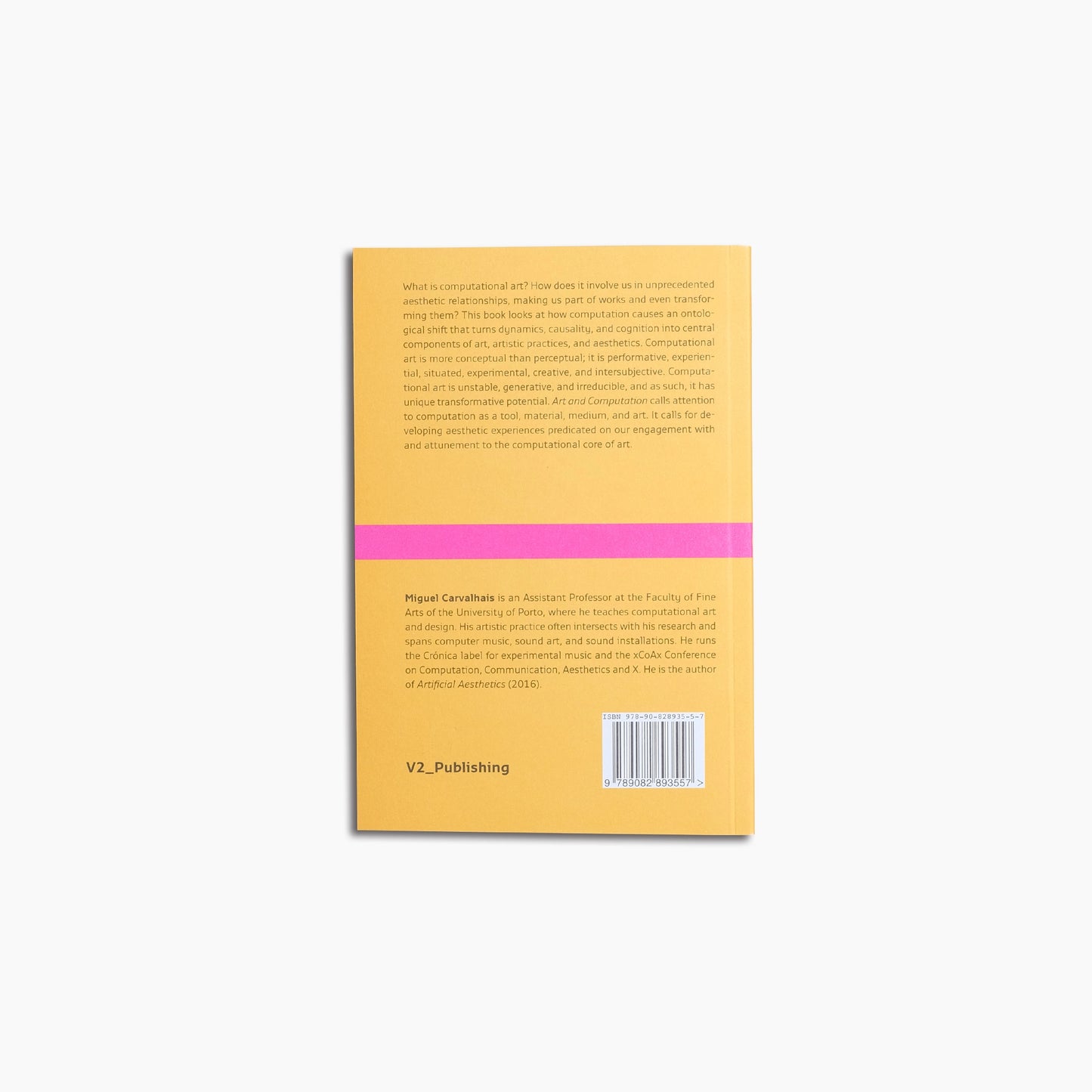Art and Computation
Art and Computation
Couldn't load pickup availability
Title: Art and Computation
Author: Miguel Carvalhais
Issued: 2022
Genre: Art Theory
Language: English
Type: Paperback, Black & White
Pages: 128
Dimensions: 11,5 x 17 cm
ISBN/EAN: 978-90-828935-5-7
Design: Joke Brouwer
In 'Art and Computation' Miguel Carvalhais treats the question: What is computational art?
What is computational art? How does it involve us in unprecedented aesthetic relationships, making us part of works and even transforming them? This book looks at how computation causes an ontological shift that turns dynamics, causality, and cognition into central components of art, artistic practices, and aesthetics. Computational art is more conceptual than perceptual; it is performative, experiential, situated, experimental, creative, and intersubjective. Computational art is unstable, generative, and irreducible, and as such, it has unique transformative potential. Art and Computation calls attention to computation as a tool, material, medium, and art. It calls for developing aesthetic experiences predicated on our engagement with and attunement to the computational core of art.
Miguel Carvalhais is an Assistant Professor at the Faculty of Fine Arts of the University of Porto, where he teaches computational art and design. His artistic practice often intersects with his research and spans computer music, sound art, and sound installations. He runs the Crónica label for experimental music and the xCoAx Conference on Computation, Communication, Aesthetics and X. He is the author of Artificial Aesthetics (2016).




